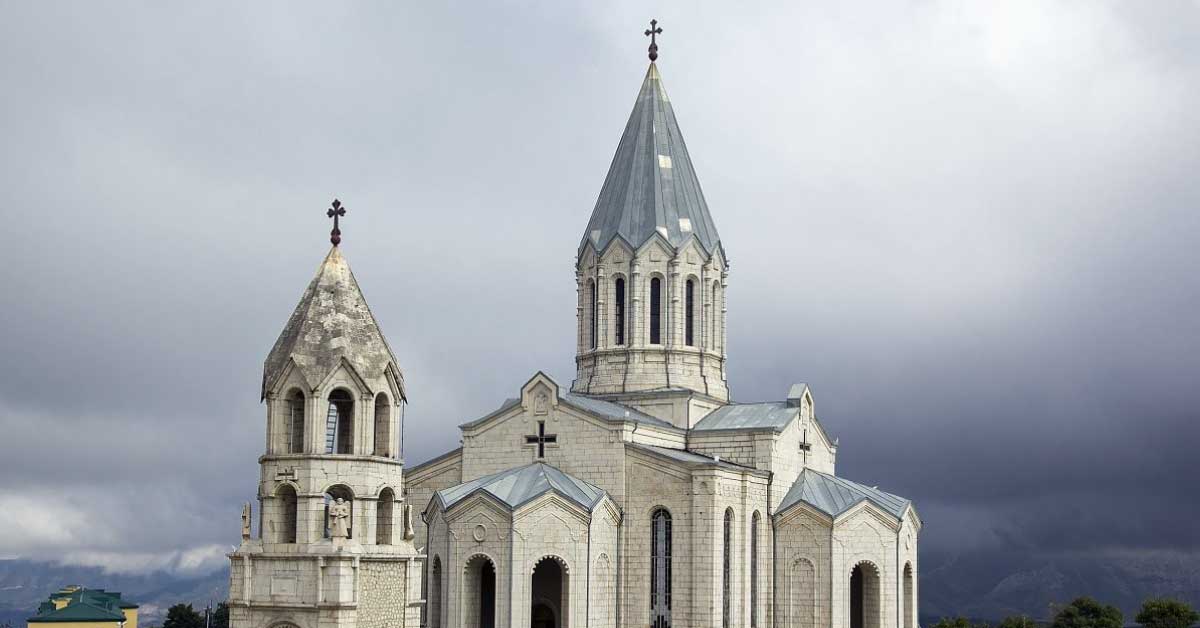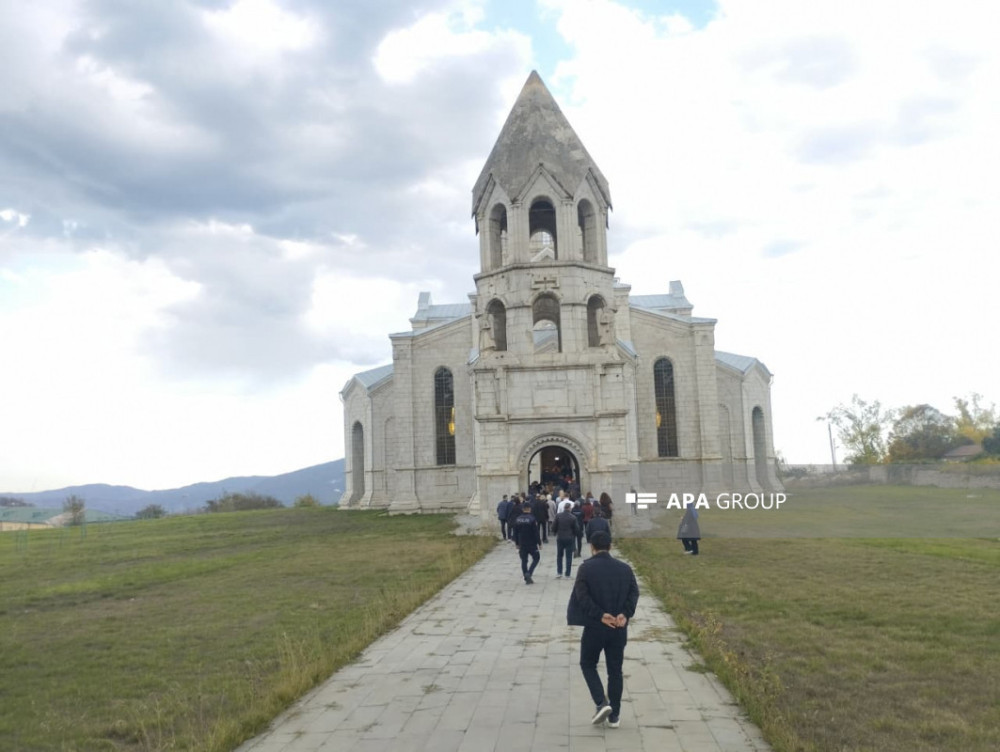2025
2025
2025-10-11

The Holy All Savior Ghazanchetsots Church in Shushi in the 2010s
On October 9, Baku hosted an international conference titled “Uniting efforts and enhancing cooperation for addressing the issue of missing persons” Following the conference, the participants toured various regions of Artsakh, including the occupied city of Shushi.
The participants visited the city and also went to the Holy All Savior Ghazanchetsots Church in Shushi, which was shelled by Baku during the 44-day war.
Photographs of the Armenian church published by Azerbaijani media suggest that Baku has apparently finished its arbitrary renovation work there, as no signs of ongoing construction are visible. The images also show that the cross on the church’s dome is missing.

The Holy All Savior Ghazanchetsots Church in Shushi after its “Albanization” in 2025
During the 44-day war in Artsakh, on October 8, the Azerbaijani armed forced twice hit the church by missiles. The international human rights organization Human Rights Watch reported on the attack, describing it as a “possible war crime.”
“The two strikes on the church, the second one while journalists and other civilians had gathered at the site, appear to be deliberate,” said Hugh Williamson, Europe and Central Asia director at Human Rights Watch. “These attacks should be impartially investigated and those responsible held to account.”
After the war, Baku announced that it had begun the “restoration” of the church, carried out in an arbitrary and strange manner, without the consent or involvement of Armenian side or any international organizations. Moreover, Azerbaijani officials presented the church as “Caucasian Albanian” and openly declared their intention to destroy Armenian religious heritage and alter its identity in the territories of Artsakh.
As early as February 2022, Azerbaijan’s minister of culture, Anar Kerimov, announced the creation of a “working group of experts on the history and architecture of Albania,” “to remove the forged traces left by Armenians on Albanian religious monuments.”
Kerimov stated that they had inspected the sites with members of the working group and would decide on their next steps after the assessment. He added that the sites were not yet completely safe and that, once cleared of mines, local and international experts would be involved to document what he called Armenian “forgeries” and alterations, which would then be presented to the international community.
In response, the Ministry of Foreign Affairs of the Republic of Armenia condemned Kerimov’s statement and the establishment of the working group, aimed at destroying Armenian religious and cultural monuments under Azerbaijani control and altering their identity. “The establishment of such a working group at the state level aimed at deliberate and illegal appropriation of the historical and cultural heritage of the neighboring people and depriving them of their historical memory, is unprecedented even in the history of conflicts. It once again demonstrates the fact that the cases of vandalism and destruction of the Armenian historical, cultural and religious heritage in Nagorno-Karabakh during the 44-day war and the following period, are deliberate and pre-planned, and are part of the policy of annihilating Nagorno-Karabakh’s indigenous Armenian population,” the announcement of the MFA reads.
The international conference organized by Baku, along with the accompanying tour in the occupied territories of Artsakh, particularly the city of Shushi, reflects a political strategy developed by Azerbaijan aimed at reshaping and denying the Armenian cultural heritage of Artsakh. By politicizing history and culture, Azerbaijani officials’ statements—presenting the church as “Albanian” and claiming to remove “forged Armenian traces”—not only violate international legal norms but also seek to erase the traces of Armenian identity in Artsakh.